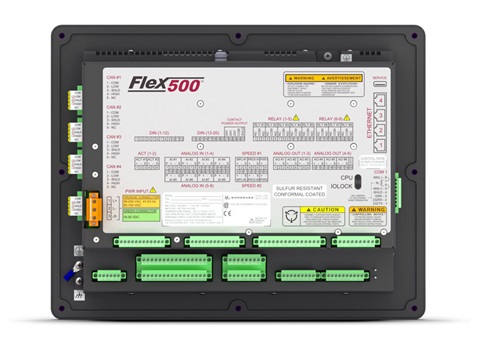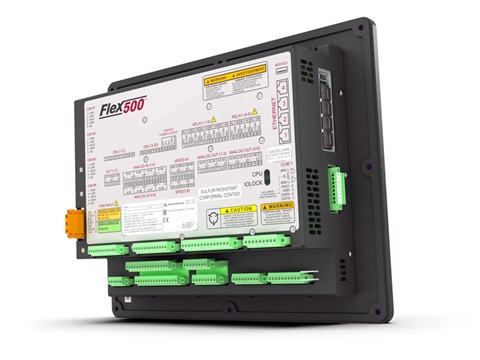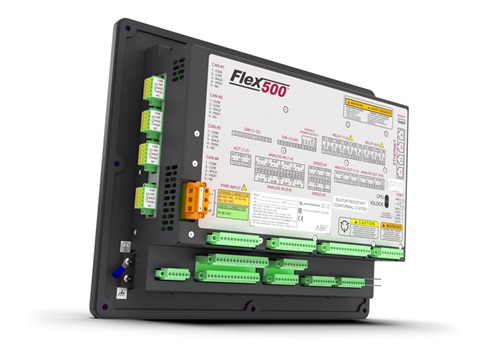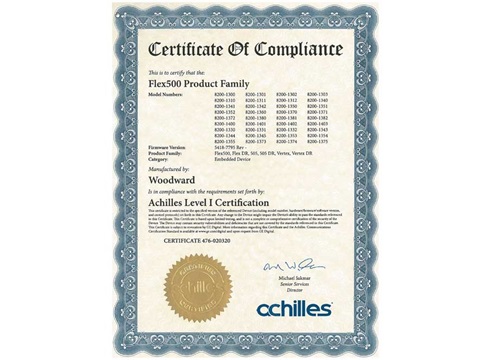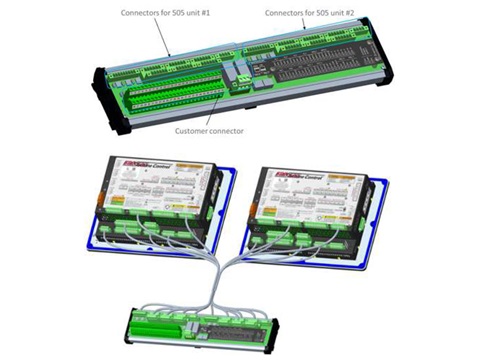The Flex500 is a programmable real-time, deterministic, purpose built dual redundant digital controller that optimizes performance and protection of compressors, steam turbines, gas turbines and hydro turbines. Woodward designed and built based on our reliable, field proven 505D hardware platform combined with our industry trusted and easy to use GAP programs and advance service tools. This model is a back panel mount, high voltage (88-264 Vac or 90-150 Vdc) power input and is rated for Class 1, Div. 2 standard location.
Features & Functions:
The Flex500 control system represents a new generation of purpose built controller with optional RemoteView virtual terminal connectivity for use in dual redundant or simplex applications. The industrial hardware platform offers a robust, low-cost control for a wide variety of turbine, engine, and compressor applications. A low cost alternative to general purpose PLC’s, the Flex500 provides an easy, user friendly GAP programming architecture along with a true industrial level long production and support lifecycle eliminating frequent high cost obsolescence issues.
The platform’s real-time operating system and dedicated inputs and outputs provide deterministic performance for key prime mover control functionality. Its fast I/O scan times, high accuracy, and software program synchronization make it ideal for use in controlling and protecting critical high speed rotating equipment.
Applications:
- Compressor control and protection
- Steam turbines
- Gas turbines
- Hydro turbines
- Gas and diesel engines
Features:
- Back Panel with optional RemoteView virtual terminal connectivity
- Dual redundant or simplex applications
- Powerful real-time microprocessor control
- Fast, accurate onboard I/O channels
- Combines real time control with PLC programming
- Deterministic I/O scan rates as fast as 5 msec.
- Distributed I/O RTCnet™ and LINKnet HT™ compable
- Compliant with time synchronization protocol SNTP
- Network control connectivity to DCS
- Low cost alternative to a general purpose PLC
- Sulfur-resistant conformal coating
- Certified for Standard or Hazardous Locations
Distributed Control System (DCS) System
Designed to function as a distributed control system, Woodward-based RTCnet™ and/or LINKnet HT distributed I/O modules can be used in conjunction with the Flex500 platform to expand the number and type of input and output signals as required by the specific application.
Ethernet, serial and CAN communication ports, and the related Modbus® TCP/IP and CANopen protocols also make this platform ideal for functioning as part of an overall plant DCS or as a standalone controller. Four Ethernet ports and four CAN ports allow for the network flexibility and redundancy necessary for today’s critical control system architectures.
Application Notes
Brochure
Product Specification
Software Manual
Technical Manual
Software


